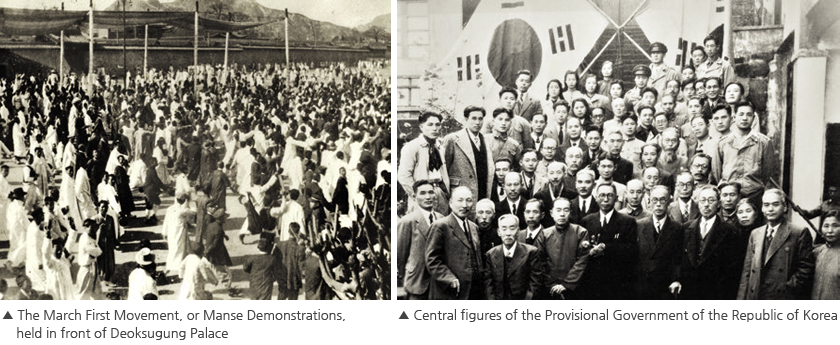Culture Focus
Korea in the World
History before 1945: The Japanese Occupation and the Independence Movement

The Japanese Occupation and the Independence Movement
With a neighbor that was aggressive and well versed in warfare, the dawn of the modern era did not bode well for the pacifist and defensive Korean nation. After implementing measures to disable Korean sovereignty, Japan colonized Korea in 1910 and exerted ruthless military control over the country. Koreans protested against this illegal, forced annexation and ruthless reign by Japan. The resistance movement during this period was influenced by the growth of nationalism in Asian colonies amid World War I and Woodrow Wilson’s principle of national self-determination.On March 1, 1919, the Korean Declaration of Independence, which was signed by 33 prominent Korean leaders, was announced. This precipitated the March First Movement, nationwide demonstrations denunciating the Japanese occupation and demanding independence. The number of participants is estimated at two million, with 7,500 people killed and some 16,000 injured. In the same year, following the movement, the Provisional Government of the Republic of Korea, based on a republican system, was established in Shanghai, China, as a center of efforts to regain independence.
As the Japanese advancement into China started in earnest with the outbreak of the Second Sino-Japanese War in 1937, Korean independence movement groups operating in China settled their ideological disagreements and staged a campaign again Japanese oppression.
Separate from the political struggle for independence, changes in society, culture, and other areas have continued since Korea opened its doors to foreign countries in the late 19th century. Korea faced rapid modernization and a process of Westernization. Towards the end of the Joseon Dynasty and during the Japanese occupation (1910–1945), a traditional culture based on discrimination and separation between classes, genders, and seniority underwent radical changes.
Korea in the World
It is not easy to understand a foreign country in a short time. is a brief introduction of Korea for educators unfamiliar to Korea. The booklet collects and summarizes significant historical, cultural, and politico-economical traces of Korea. An essential material for educators who want to bring Korea in the textbook and to classroom.
It is not easy to understand a foreign country in a short time.

